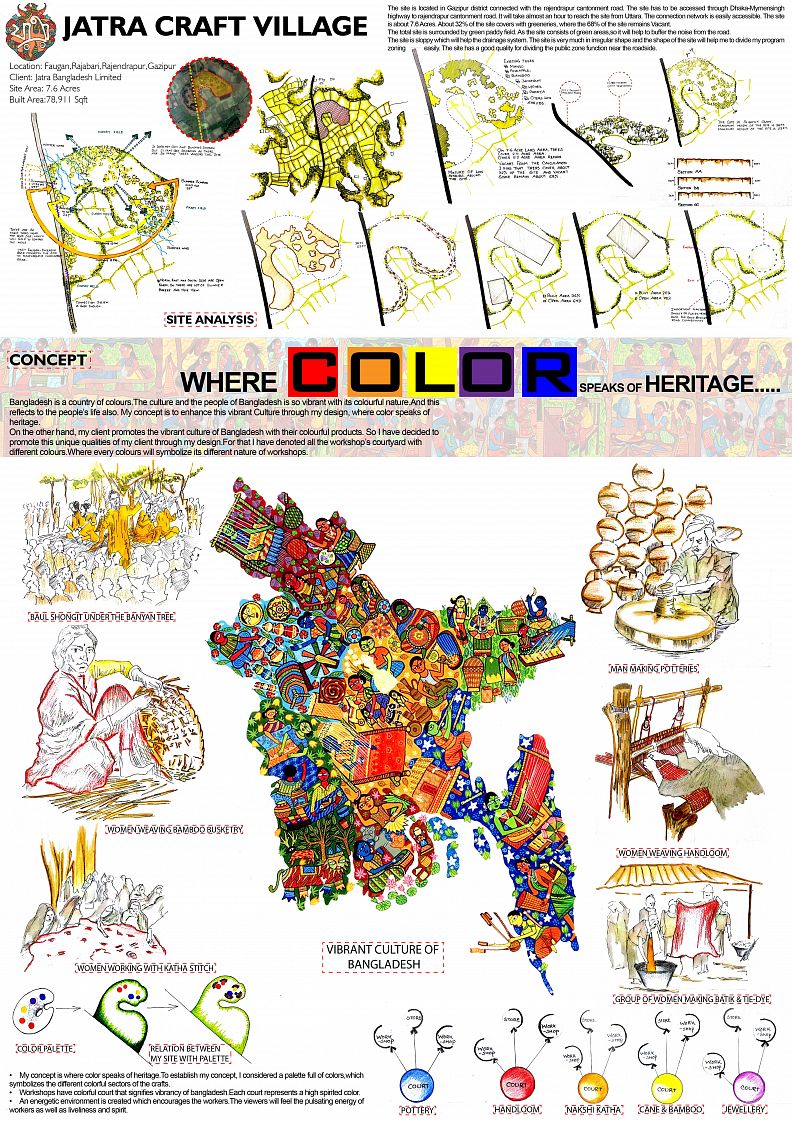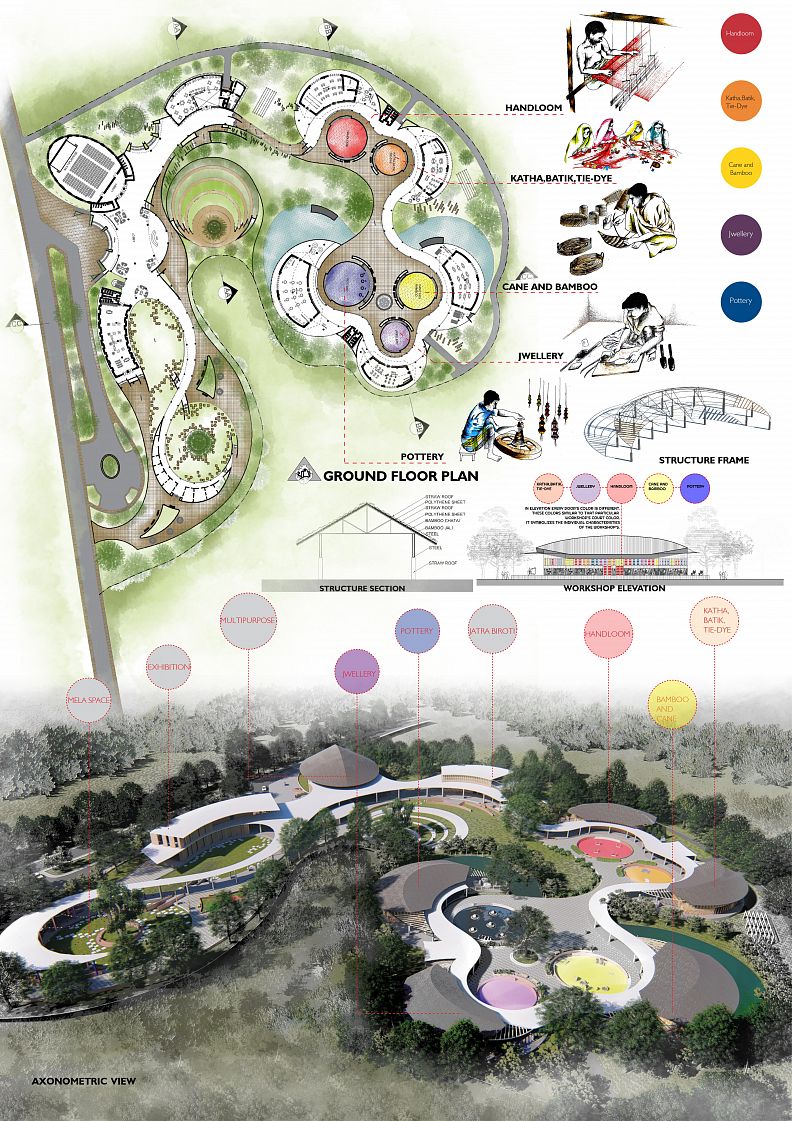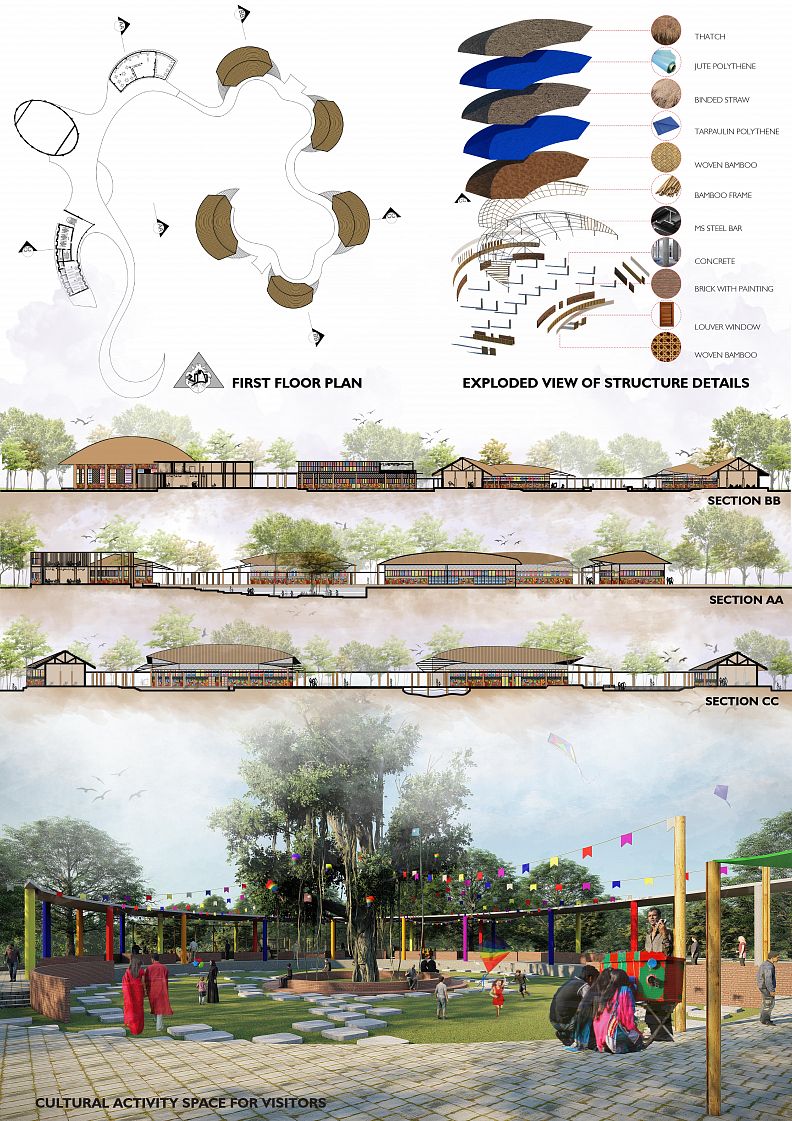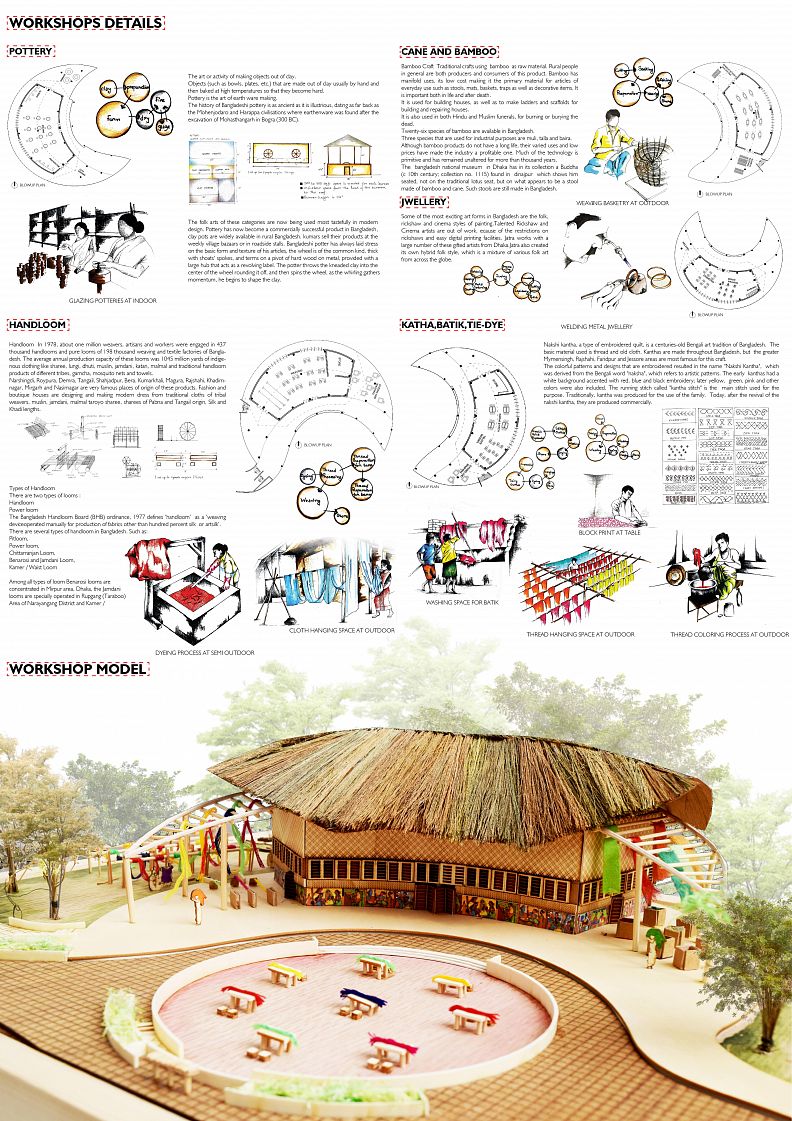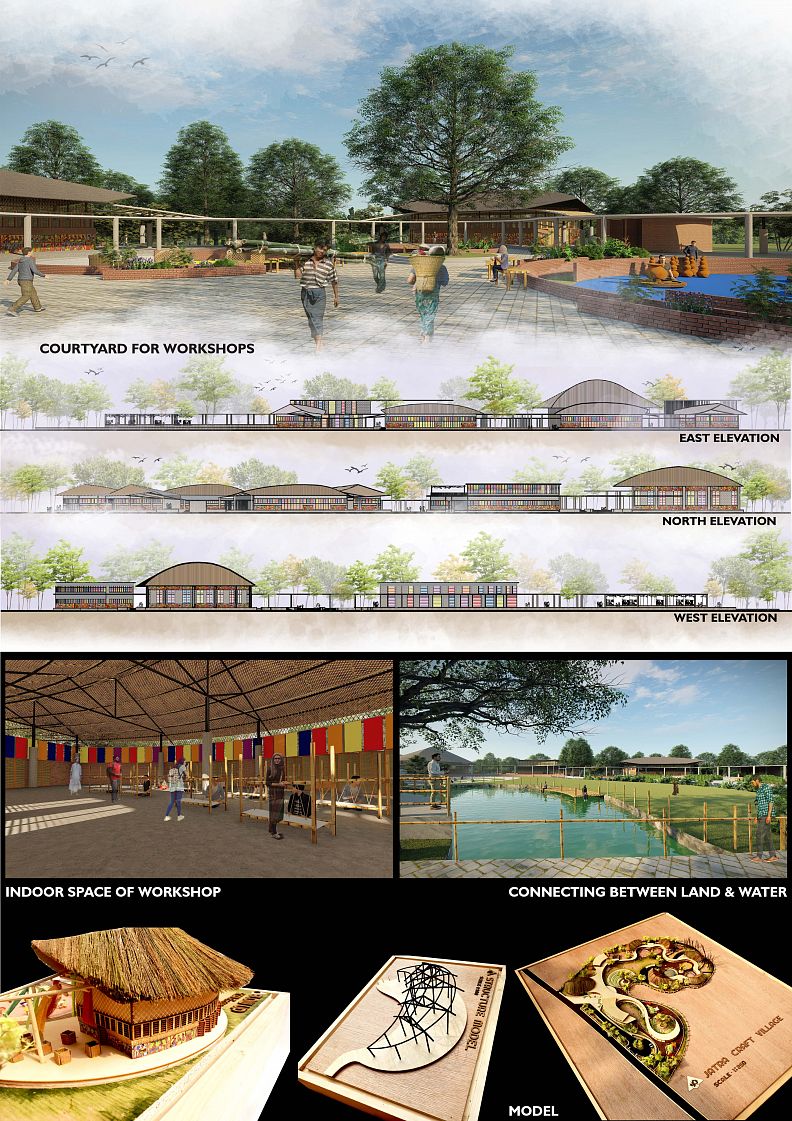JATRA CRAFT VILLAGE

Project idea
It’s a representation of a multifaceted heritage, which has a rich, diverse tradition. Art and Crafts rank among the oldest in them. It regards aesthetics of Bangladesh history and also represents Bangladeshi people’s dignity and pride.
People's arts and crafts are central to the study of any culture from historical perspectives. Not only that, handcrafted objects provide essential pointers to the socio-economic and cultural status, the spiritual and intellectual development and values of a society.
The age-old traditions and crafts of Bangladesh continue to thrive even as the country moves ahead with the times. Skills and know-how have been passed down through generations, and by using ingenuity and marketing many Bangladeshi artisans continue to make a living out of traditional crafts such as wood carving, textile manufacturing, leatherwork, ceramics, basket weaving, handmade paper, metal-craft, jewellery and embroidery, among others.
Project description
In Bangla Jatra means journey. In their case, a journey towards all that is colorful. The people and culture of Bangladesh are vibrant. Their journey is to translate this energy in art, fashion and lifestyle products. Since 2000, Jatra has been promoting and popularizing Bangladeshi hand weaven clothing and handmade craft products. Today through Jatra, countless artisans have the opportunity to make a better and sustainable way of living. They inspired by the positive and colourful side of Bangladesh and believe in supporting our local ethical industries.
The village Faugan, Gazipur was full of craftsmen, who were engaged with craft related works specially handloom, bamboo cane and pottery. Now a days, due to its poor progress and income, most of the craftsmen have already switched their profession to keep themselves economically solved. The project is inspired by the positive and colorful side of Bangladesh and believe in supporting the local ethical industries, so an initiative has been taken to revive the local craft tradition that was once the pride of the local people and also to uplift their dignity as well as economic status through the proper execution and practice of material craftsmanship that has been a part of their daily lives since many decades.
The site is located in Gazipur district connected with the rajendrapur cantonment road. The site has to be accessed through Dhaka-Mymensingh highway to rajendrapur cantonment road. It will take almost an hour to reach the site from Uttara. The connection network is easily accessible. The site is about 7.6 Acres. About 32% of the site covers with greeneries, where the 68% of the site remains Vacant.
The total site is surrounded by green paddy field. As the site consists of green areas, so it will help to buffer the noise from the road.
The site is sloppy which will help the drainage system. The site is very much in irregular shape and the shape of the site will help me to divide my program zoning easily. The site has a good quality for dividing the public zone function near the roadside.
Technical information
The challenge of this project is to create a reflection of Bangladeshi culture through the design. As the culture of Bangladesh is so colorful and vibrant, so this energy is translated in the design to make the environment vibrant with colors. The concept is “WHERE COLOR SPEAKS OF HERITAGE”. So to establish the concept there have been denoted all the workshop’s courtyard with different colors, where every colors symbolize its different nature of workshops one can easily identify the specific workshop with its specific color. Colors are chosen warm colors (Red-Handloom, Orange-Katha, batik, Tie-dye, Yellow-Cane and Bamboo) and cool colors (Purple-Jewelry, Blue-Pottery).Each courtyard gives a visitor different feelings and environments through their activities and visual colors. For creating a touch of tradition, traditional materials like straw roof, wooden door-window with brick wall, colorful paintings are used for elevations to represent the traditions of Bangladesh.
The proposed site was a bit challenging as most of the site is covered with greeneries. So most of the trees of the site are kept. Whenever trees are cut to establish the design, there have been tried to revive those trees also, in other part of the site. There also established a pathway surrounded by the greeneries. This pathway also connects people to a cultural space where folk songs can be performed for giving the traditional vibes. The shape of the site is similar to a color palette. So it has been combined the vibrancy of Bangladesh with the color palette shaped site. Where each court represents a high spirited color.
This platform can be used as a cultural hub to popularize their identity through their culture and tradition all over the country or to the world and it will help to enhance cultural exchange between the people in Bangladesh.

